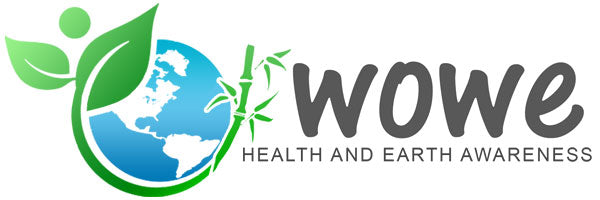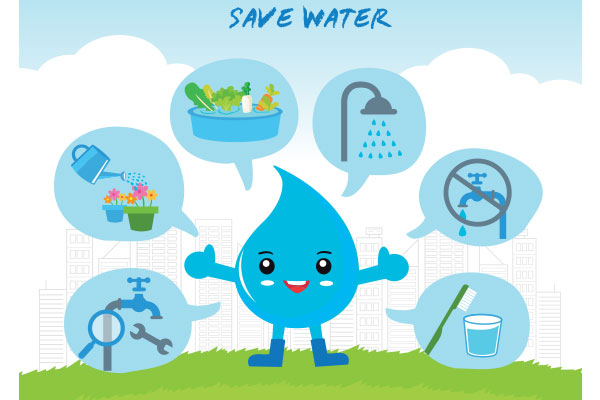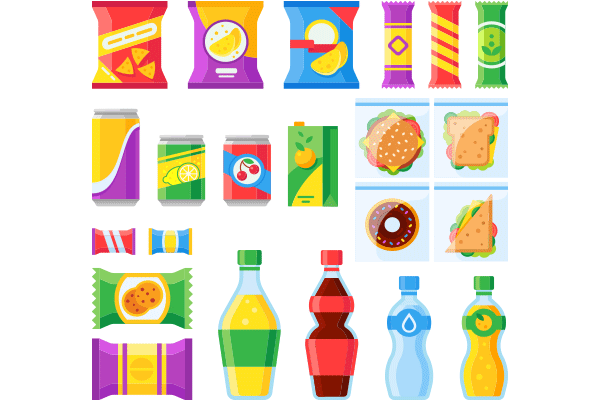Plastic, it’s on everyone’s mind. Plastic is a constant in today’s world, a now-standard packaging material that crops up in virtually every industry, every store, and every home worldwide. Plastic has overtaken shelves, landfills, and even our refrigerators, and it isn’t slowing down. Despite international efforts to reduce plastic usage, plastic manufacturing rates remain steady, and the demand for plastic has continued to rise in the last few decades. From 2000 to 2010, the amount of plastic produced eclipsed the amount produced in the entirety of the last century, and in the next year, more than 300 million tons of plastic will be produced worldwide.
You might think that, with so much plastic being produced each year, there would be a reliable and effective disposal method available. In theory, recycling and reusing plastic products should reduce the global need for new plastics, and reduce waste. Unfortunately, less than 10% of plastics are recycled, with the other 90% finding their way to landfills, oceans, rivers, and combustion plants. With the demand for plastic staying steady and global efforts to reduce plastic use not working fast enough, a great way to personally reduce your plastic footprint is by learning the ins and outs of recycling.
By working to reduce your personal plastic usage and by educating yourself on plastic recycling, you can do your part for the planet. Not all plastic products are recyclable, and some may surprise you, so understanding how and why plastic should be recycled can help you make better, more informed decisions. In this article, we will cover what plastic is, how it affects the environment, how the recycling process works, and what products you should always toss in that big blue bin!
What is Plastic?
Plastics can be made with a variety of materials, but the primary material required for the production of plastic is crude oil. Crude oil is acquired through the process of ‘fracking,’ Fracking is a highly invasive method of extracting crude oil from below ground and has already received major pushback from environmental conservationists for its negative impacts on environmental health. Fracking causes pollution to seep into drinking water supplies, releases toxins into the soil, and can create underground cavities that create dangerous conditions for the people living there. The plastics industry demands a staggering amount of oil, and around 8% of all oil worldwide is used in the manufacturing of plastic.
The fracking process is not the end of the potential environmental harm. Once extracted, crude oil is processed in oil refineries and turned into resin pellets, ready to be turned into plastics. During the manufacturing process, plastics factories release pollutant CO2 emissions of around 1.8 billion metric tons annually. Already a major contributor to global air pollution, the plastics industry is projected to account for 17% of global emissions in the next decade.
Plastic is used in virtually every industry, but some sectors are heavier hitters than others. The general plastics usage breakdown by sector is as follows:
- Packaging - 35.9%
- Building & Construction - 16%
- Textiles - 14.5%
- Consumer Products - 10.3%
- Transportation - 6.6%
- Electronics - 4.4%
- Industrial - 0.7%
- Other - 11.5%
Though not much can be done by the general public to reduce industrial, transportation, and building plastics usage, packaging and consumer products are something we can impact. Avoiding things like plastic bottles, straws, single-use coffee cups, excessively packaged food products and so on can help you reduce your footprint and plastic use.
Plastic and the Environment
Clearly, plastic production has a negative effect on the environment, but once the plastic has been made, it is pretty hard to get rid of. The long-lasting nature of plastic may be good for product longevity, but taking thousands of years to break down in the environment is a less positive attribute. Plastic also becomes weaker and degrades in quality over time, potentially releasing toxins into the environment or your body.
Many plastics contain BPA, a hormone disruptor that has been linked to developmental and hormone disorders including certain cancers, infertility, and metabolic disorders. The longer a plastic product is used, the more scuffs or scratches it sustains, and the more heat it is exposed to can increase the release of BPA from certain plastic items. Besides toxic chemicals, once disposed of, plastic takes centuries to break down, first becoming microplastics harmful to wildlife and soil health.
Microplastics are the product of larger plastic items breaking down over time and discarded resin pellets not deemed fit for use in plastics manufacturing. These ‘micro’ pieces of plastic residue are frequently found in the stomachs of diseased wildlife and marine life, and can potentially contaminate soil, organic organisms, and water sources. Microplastics are also frequently digested by humans since their tiny size allows them to be overlooked by the naked eye. Large plastic items, small plastic items, microplastics, and plastic resins are frequently eaten by animals and marine life, and all forms of plastic pollution pose a threat to those vulnerable ecosystems.
Recyclable vs. Non-Recyclable Plastics
The best way to fight plastic pollution comes in two parts. First, you should start recycling every plastic product you can in an effort to reduce the amount being dumped in landfills, oceans, and rivers. Some plastic products are recyclable, others are not, but knowing which you can toss in your blue bin will let you feel more confident next time you are faced with a plastic conundrum.
The simplest way to know whether or not a plastic product can be recycled is to check for a plastic code. Plastic numbers 1, 2, 4 & 5 can be recycled. 3, 6 & 7 cannot. Many plastics are labeled with this simple code, but as a rule of thumb: if it has a cap, take it off and recycle them separated.
Though many plastic products are now being labeled with plastic codes, not all plastic products can be labeled, and not all manufacturers take the time to do so. If you are interested in a comprehensive list of recyclable items, check out our article on recycling ‘Should I Recycle That?’
Here is a list of plastic items you absolutely cannot recycle and instead should avoid:
- Plastic bags
- Straws
- Chip and snack bags
- Plastic toys
- Toothbrushes
- Razors
Plastic Recycling Basics
Once you have determined whether or not an item is recyclable, your job is over and the rest is up to your local recycling facilities. In the facility, the plastic items will be sorted based on resin content to be processed separately. Products like straws are too light to be processed by recycling facilities and can easily slip into and contaminate other recycling batches.
Once sorted, the plastic products are chopped and ground into small pieces for easier processing and cleaning. The cleaning process removes residue, dirt, grime, oils, and prepares the plastic pieces to be melted and turned into pellets. These pellets are then sold to be used in the manufacturing of new plastic products.
Plastic Alternatives
The second part of fighting plastic pollution is to avoid plastic and use eco-friendly plastic alternatives instead. Reducing the demand for plastic will require consumers changing their preferences and learning to love and utilize alternative, more eco-friendly materials. There are some things you can’t (and shouldn’t) live without, like a toothbrush, bags for your fresh produce, and certain little luxuries.
At Wowe Lifestyle, we thrive on making eco-friendly living more accessible to everyone. We create and sell awesome eco-friendly alternatives to the products you can’t live without so you can reduce your environmental impact without inconveniencing yourself. Check out some of these awesome eco-friendly products from Wowe:
Eco-Friendly and Natural Bamboo Toothbrushes
Toothbrushes are thrown away at an impressive rate of 1 billion per year in the US alone. These mixed-plastic products are non-recyclable, yet a completely necessary part of everyday life. You need to brush your teeth, you need to practice good oral hygiene, but you still want to be environmentally friendly. Unfortunately, there are no mass-market environmental alternatives to plastic toothbrushes, so we made our own.
Wowe Eco-Friendly and Natural Bamboo Toothbrushes are made with biodegradable bamboo for high-performance brushing without the Earth-polluting ingredients. Bamboo toothbrushes last just as long and perform as well as traditional plastic toothbrushes, and kids and parents alike love the soft but effective bristles. Wowe even offers a charcoal-infused bamboo toothbrush to help you keep your smile white naturally.
Classic Eco-Friendly Double Edge Safety Razor
Like toothbrushes, razors are common plastic items that are non-recyclable and frequent visitors to the landfill. Those little pink razors you pick up from the drug store may be cheap, but their toll on the environment is more expensive than they are worth. Also made from eco-friendly bamboo, our Classic Eco-Friendly Double Edge Safety Razor is water-resistant, and comes with replaceable stainless steel razor blades.
This is so long-lasting, you may never have to buy another razor ever again. Instead of needing to throw away your razor and the head, simply remove the double edge razor blade and replace it with a new one. These blades are super sharp and provide an excellent shave, but best of all, these blades are completely recyclable, putting far less strain on the environment than traditional razors.
Eco-Friendly Stainless Steel Metal Straws
Straws may not be great for the environment, but they actually serve an important purpose. Drinking with a straw can help people with sensitive teeth avoid cold or hot liquids, keep staining liquids away from your front teeth, and are an important tool for individuals with limited mobility. Rather than opting for a single-use plastic straw, choose to upgrade your straw game with a stainless steel one instead.
Wowe’s Eco-Friendly Stainless Steel Metal Straws come in straight and curved varieties, and we even offer convenient wood travel cases so you can take your favorite drinking implement with you wherever you are. These straws are durable, and made from FDA approved stainless steel for easy care and cleaning. Next time you pick up your favorite drink and want a straw, avoid the single-use plastic ones and choose the stainless steel variety instead.
If you are interested in learning more about living green and discovering more eco-friendly products, visit us at Wowe Lifestyle.







